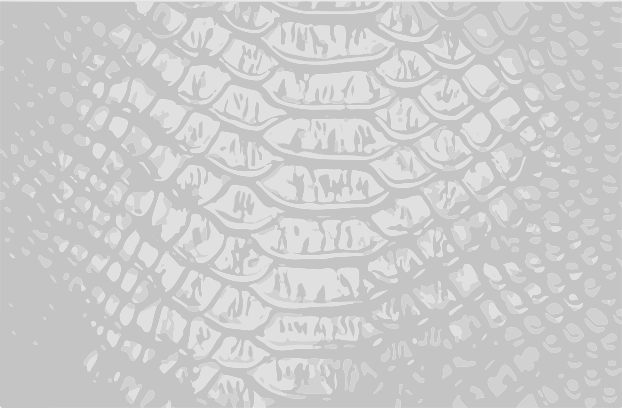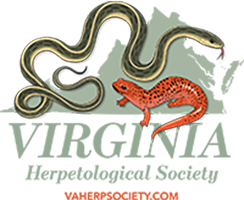
How to Recognize an
Eastern Ratsnake
Photo by: John White

Characteristics:
Average Length: 55 in (139.7 cm)
Maximum Length: 96 in (243.8 cm)
Coloration: Uniformly black body with a black-and-white checked ventral surface. In Virginia some individuals can have a gray-black body with black stripes as an adult resembling the juvenile pattern.
Head Shape: Rounded snout. However, Eastern Ratsnakes can assume a defensive posture in which they will flatten their heads to appear much wider. This behavior is more typical in juveniles but adults will also flatten their heads if threatened.
Scales: Weekly keeled (small ridge on the scale)
Young: Young Eastern Ratsnakes look much different than adults. Juveniles have a black-and-white to gray body with black blotches on the back.
Behaviors:
When threatened, Eastern Ratsnakes will flatten their heads and rapidly vibrate their tail tips. If the snakes are in leaf litter, this vibration can sound similar to a rattlesnake, but Eastern Ratsnakes are harmless.
Eastern Ratsnakes consume many species of small mammals that can be pests to humans. Many farmers and landowners welcome Eastern Ratsnakes to their properties to control bird and rodent populations.

Typical
Habitats:
Eastern Ratsnakes occur in a wide variety of habitats throughout Virginia, including suburbs. You can often find these snakes in abandoned buildings, barns, storage sheds.
The following organizations are great sources for additional Eastern Ratsnake Information:
Learn more about Snakes of Virginia:
>Snakes and Lizards of Virginia
New 2nd Edition! This 72-page field guide includes more than 170 photos covering the ecology, distribution and conservation of Virginia’s 32 species of snake and 9 species of lizard. It is an expanded version of our current snake guide with more technical information and new photos!






